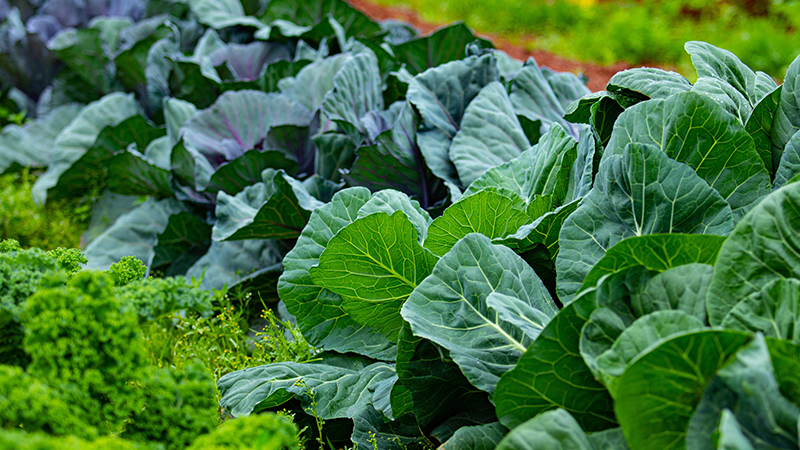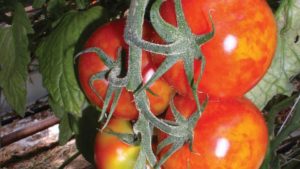Hot Potato Trends on Front Burner for Florida Growers
Hastings isn’t known as the “Potato Capital of Florida” for nothing. The farm town in the heart of the Tri-County Agricultural Area (TCAA) has a rich history when it comes to the tuberous crop. More than 20,000 acres are still grown in and around the area today.
-
-
1 of 17
Meeting Mashup
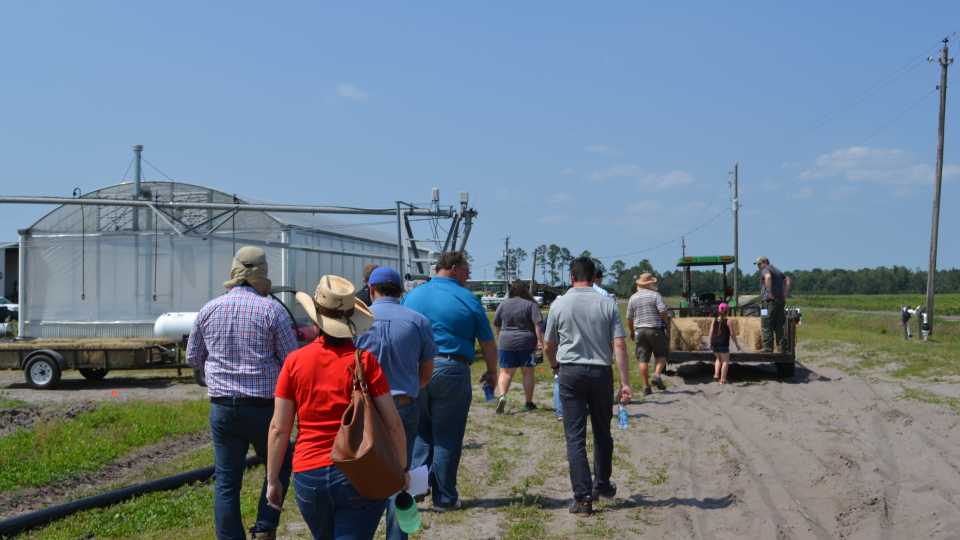
A bright, sunny and warm afternoon greeted attendees of the annual UF/IFAS Potato Field Day in Hastings. The first part of the event was a tour to view several research trial plots around the Cowpen Branch demonstration farm.
Photo by Paul Rusnak -
2 of 17
Water Wise
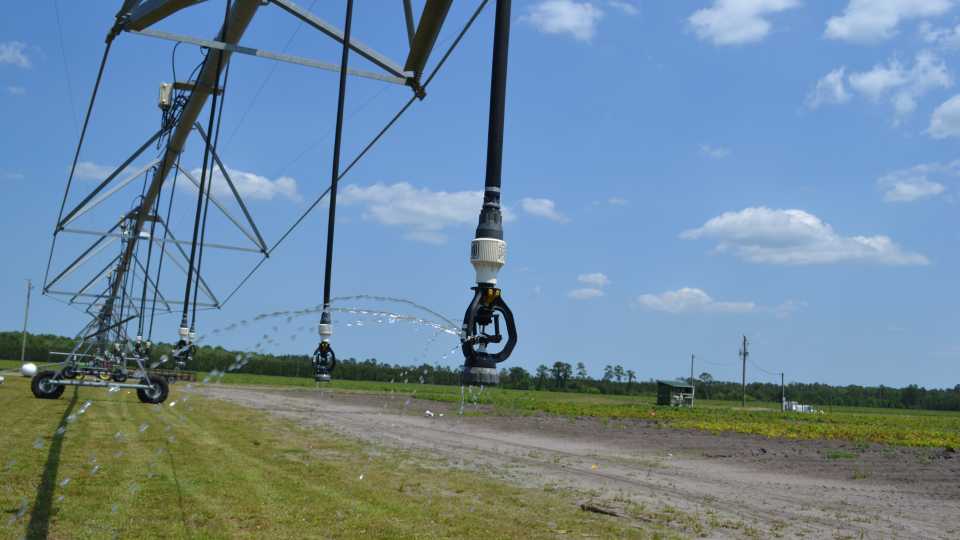
Center pivot irrigation systems are a common sight on potato farms. This unit was adjacent to the first stop of the UF/IFAS Potato Field Day in Hastings in which fertigation was discussed.
Photo by Paul Rusnak -
3 of 17
Fertigation Facts
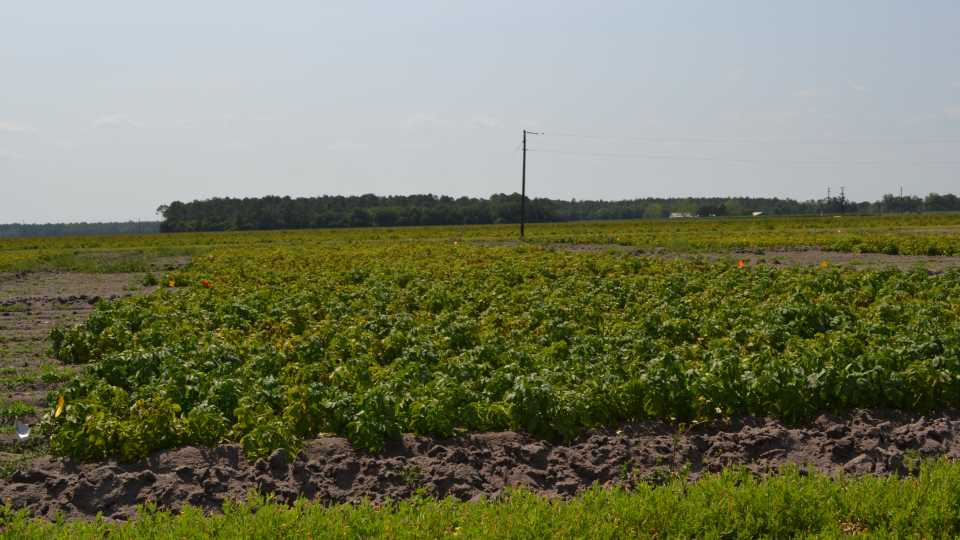
Can fertigation significantly increase potato yield? According to UF/IFAS Professor David Liu, it not only can increase tuber yield by 20%, but it can also synchronize nitrogen supply and demand; save labor; reduce plant damage; and minimize leaching.
Photo by Paul Rusnak -
4 of 17
Let it Burn
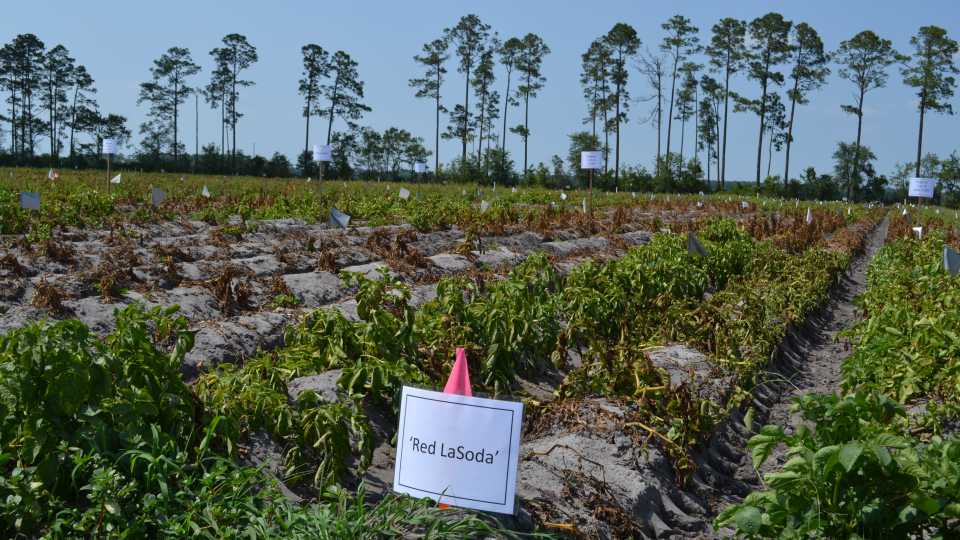
In addition to cover crop weed management, UF/IFAS Assistant Professor Peter Dittmar touched on vine management for skin set. He drilled down to a field study that shows the effect of desiccation timing using the herbicide Reglone on different potato cultivars. By the photo, it is pretty obvious to see the single or split application versus control.
Photo by Paul Rusnak -
5 of 17
Specialty Spuds
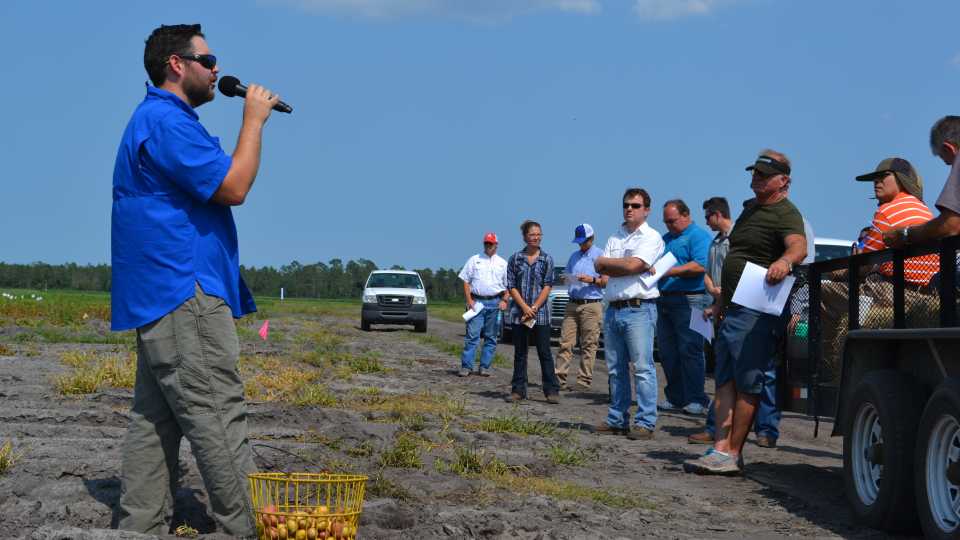
UF/IFAS Graduate Student Christian Christensen informed an interested Potato Field Day crowd about the partnership between UF/IFAS and USDA for specialty market potato research. While the overall goal is to provide growers with unique offerings for a hungry market segment, other future breeding efforts include improved variety development for late blight resistance and nitrogen use efficiency.
Photo by Paul Rusnak -
6 of 17
Hot Potatoes
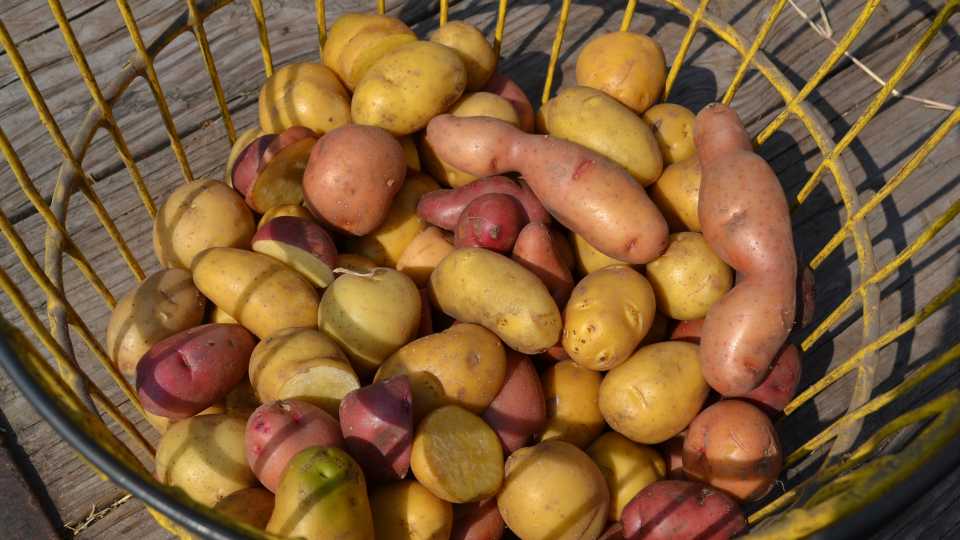
Specialty potato varieties are high in nutrition and in demand for health-conscious consumers. This basket of multicolored, odd-shaped spuds made the rounds during the UF/IFAS Potato Field Day in Hastings.
Photo by Paul Rusnak -
7 of 17
You Go, Joe
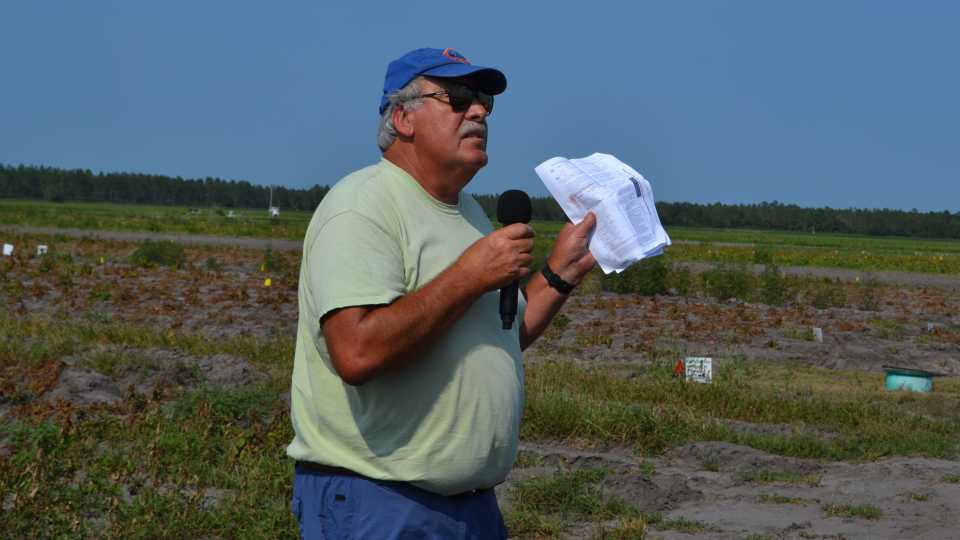
"Nematode Joe" Noling led an in-the-field discussion about alternative fumigant options for pest control in potatoes. Among the choices, which included Nimitz from ADAMA, cost and efficacy were top of mind for those in the audience.
Photo by Paul Rusnak -
8 of 17
Mass Transit
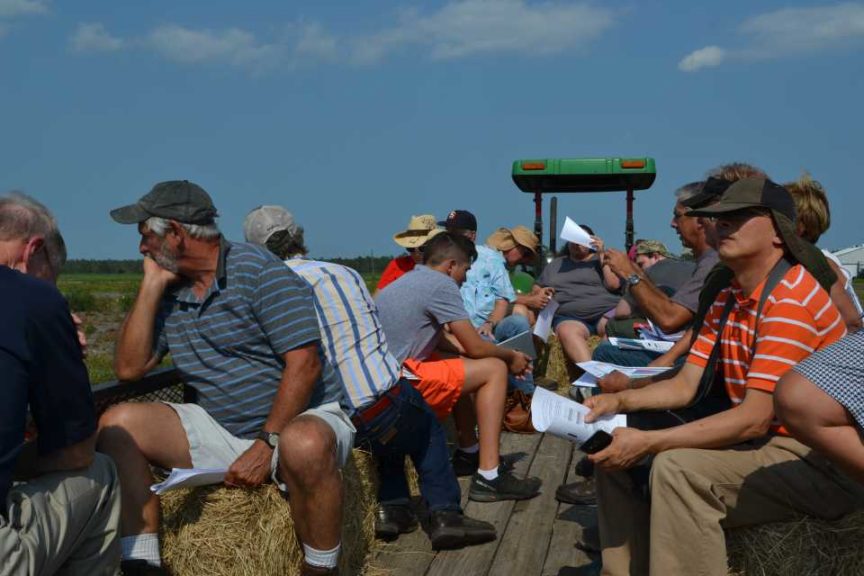
The most efficient way to tour the UF/IFAS Cowpen Branch research farm was by wagon. There were two full trailers, plus a long line of extended-cab pickups, that slowly made their way around the expansive property, stopping at each plot.
Photo by Paul Rusnak -
9 of 17
Nematology Know-How
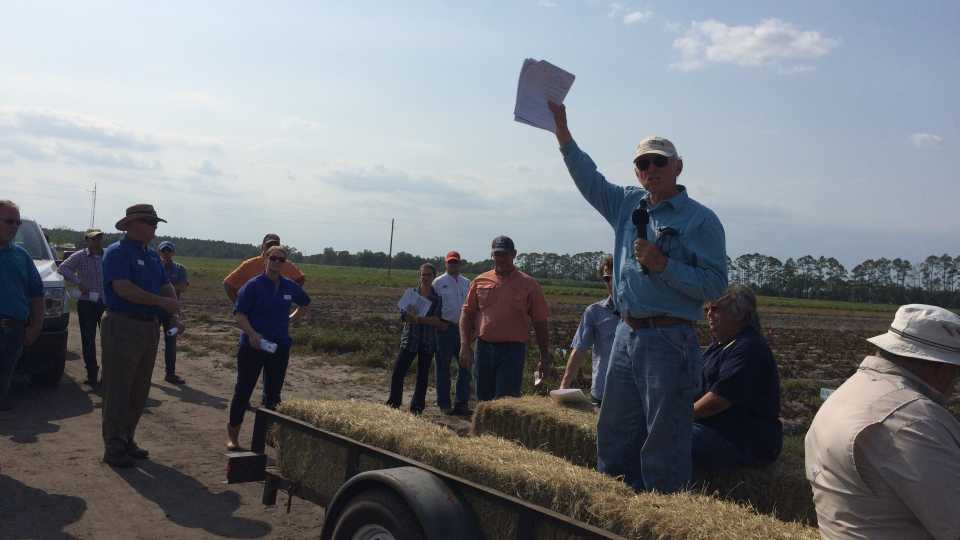
UF/IFAS Nematologist Don Dickson discussed nematode management during the annual Potato Field Day in Hastings. Among his dialogue was answering the question regarding the possibility of aldicarb (Temik) coming back into the specialty crop protection mix. Dickson confirmed it is in registration, but just for cotton at this point and not in food crops.
Photo by Paul Rusnak -
10 of 17
Instructive Interaction
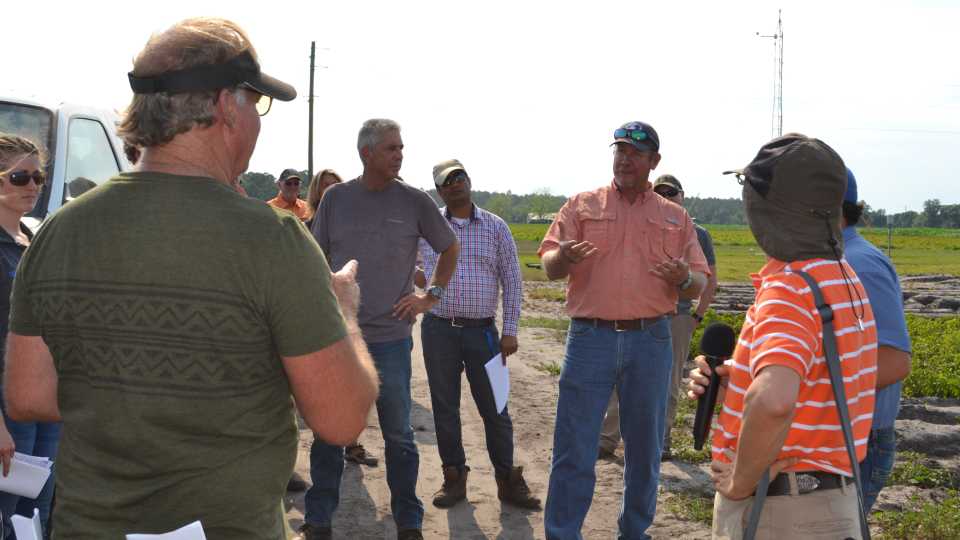
Flagler County UF/IFAS Extension Agent Mark Warren addresses a question from a grower about phosphorus recommendations during the annual Potato Field Day in Hastings.
Photo by Paul Rusnak -
11 of 17
The Right Direction
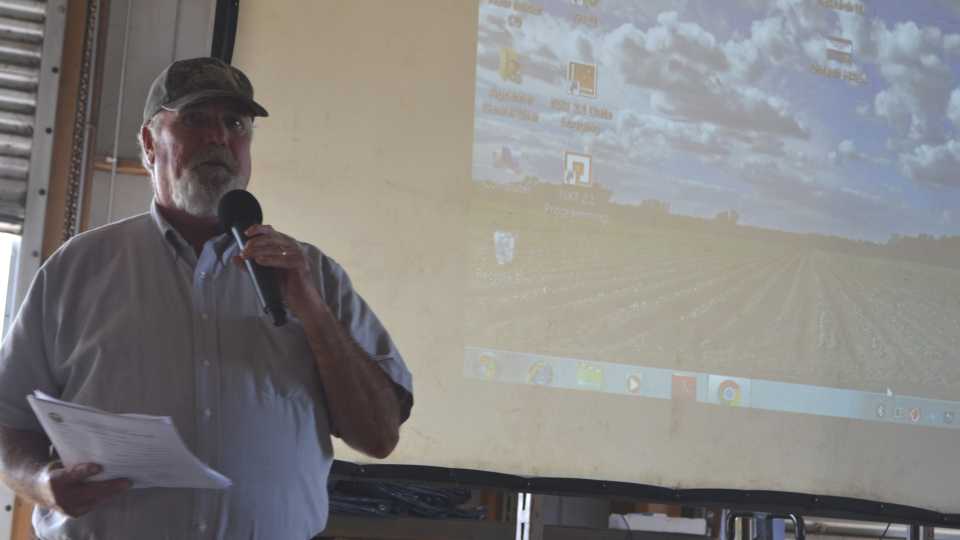
Gary K. England, Director of the UF/IFAS Hastings Agricultural Extension Center, welcomed Potato Field Day attendees. Despite only being in his role for less than a year, England has spearheaded multiple ongoing trials at the Center's Cowpen Branch research farm. During the Field Day, fellow UF/IFAS associate Don Dickson gave props to England for his efforts to turn the Hastings facility into a legitimate research center.
Photo by Paul Rusnak -
12 of 17
VIP in the House
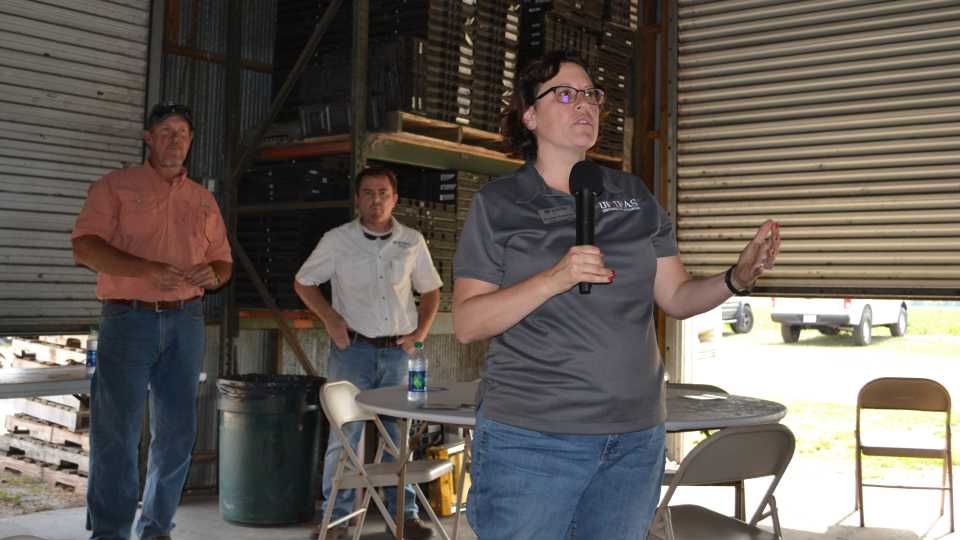
Jeanna Mastrodicasa, UF/IFAS Associate Vice President for Operations, was on hand for the Potato Field Day. She mentioned how much she enjoys seeing all the relevant, scientific research being put into action.
Photo by Paul Rusnak -
13 of 17
Heat Tolerant
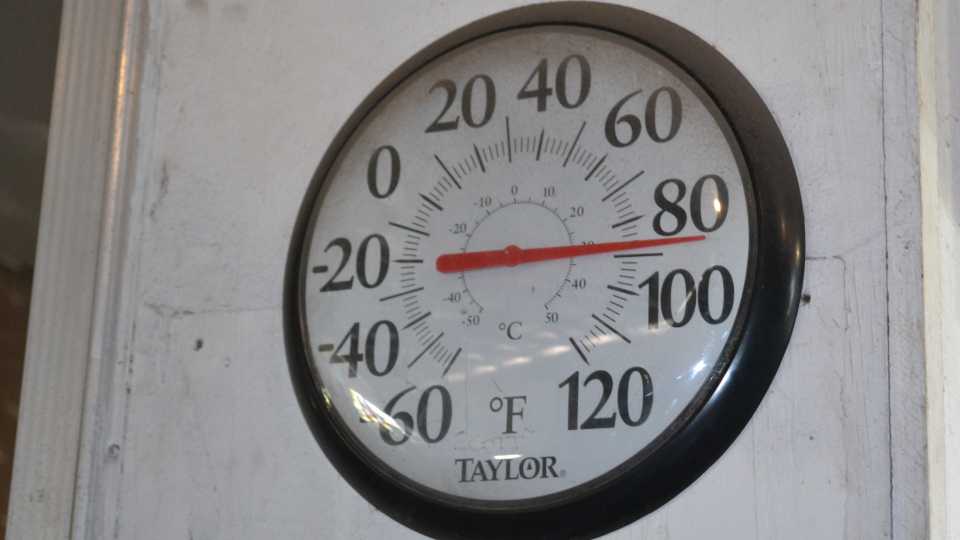
It felt hot and it was during the UF/IFAS Potato Field Day in Hastings. This thermometer in the barn of the Cowpen Branch research farm confirmed the day's weather. At least there was a nice breeze though. The lack of rain this season was a big part of the discussion during the gathering.
Photo by Paul Rusnak -
14 of 17
Short Course in Session
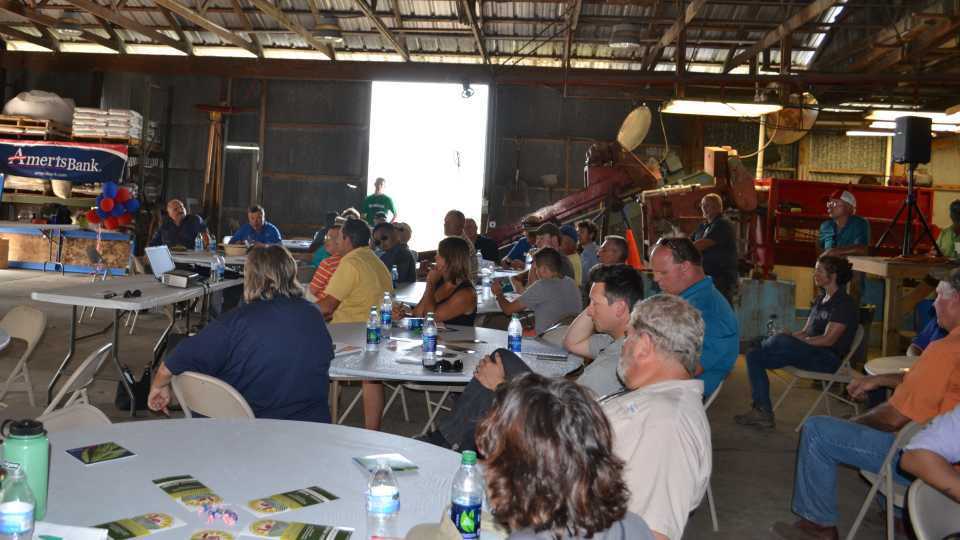
Following the field tour, attendees gathered in the barn for a short course of presentations given by UF/IFAS experts. Topics ranged from the latest research on sweet potatoes; fertigation's impact on potato yield; irrigation tactics for local soils; and seed piece spacing for chipping.
Photo by Paul Rusnak -
15 of 17
Something Sweet
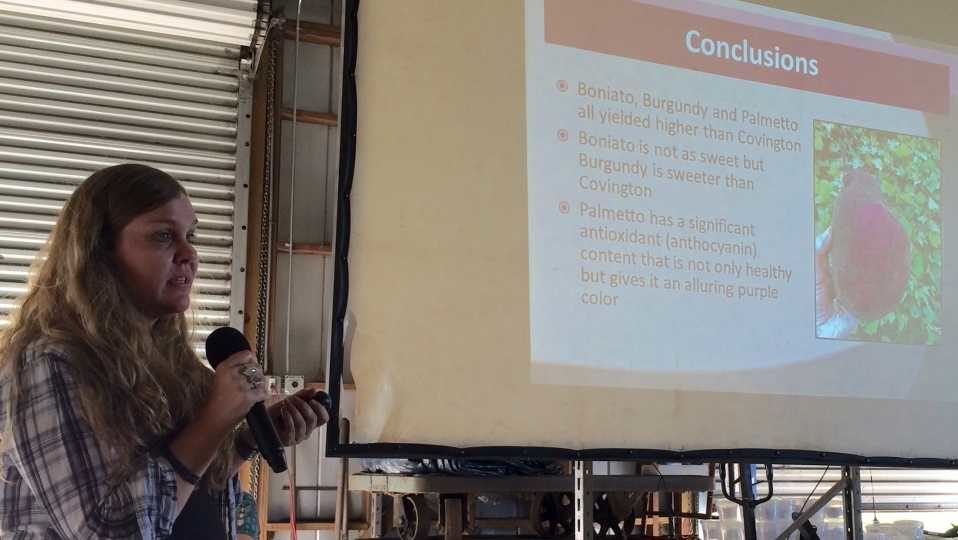
Bonnie C. Wells, Doctor of Plant Medicine and St. Johns County UF/IFAS Commercial Agriculture Extension Agent, fielded several questions from the crowd during the Potato Field Day short course about the potential of sweet potatoes for local growers. The robust audience participation was a good sign of how much interest there is in this crop. The subtropical nature of sweet potatoes and preference of light soils make them suitable for Florida's hot summers, Wells said.
Photo by Paul Rusnak -
16 of 17
Dickeya Down-Low
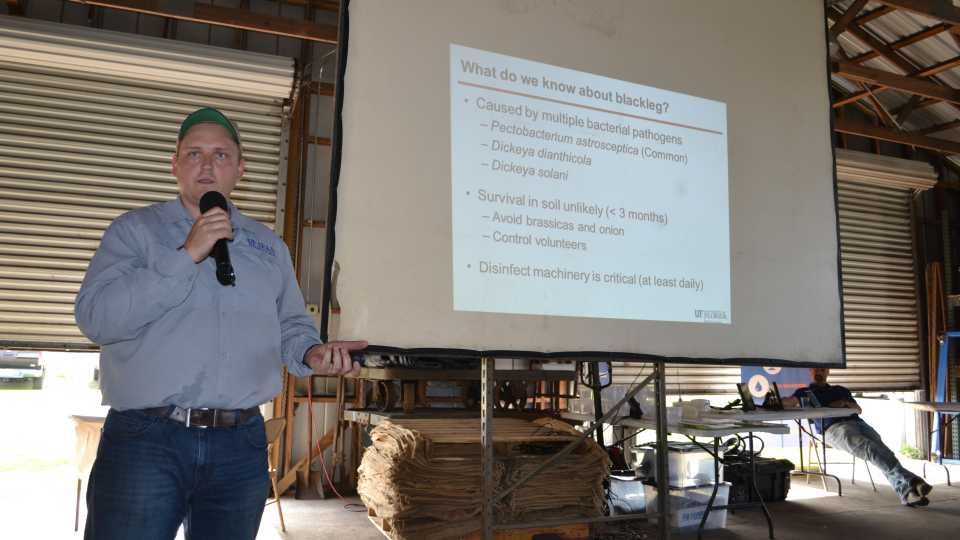
During the UF/IFAS Potato Field Day short course, Assistant Professor Nick Dufault discussed Dickeya incidence. Reports of the disease have been sporadic this season. But there are some pockets in Florida that have experienced pressure, including plots around Citra and several around the Tri-County Agricultural Area.
Photo by Paul Rusnak -
17 of 17
Until Next Time ...
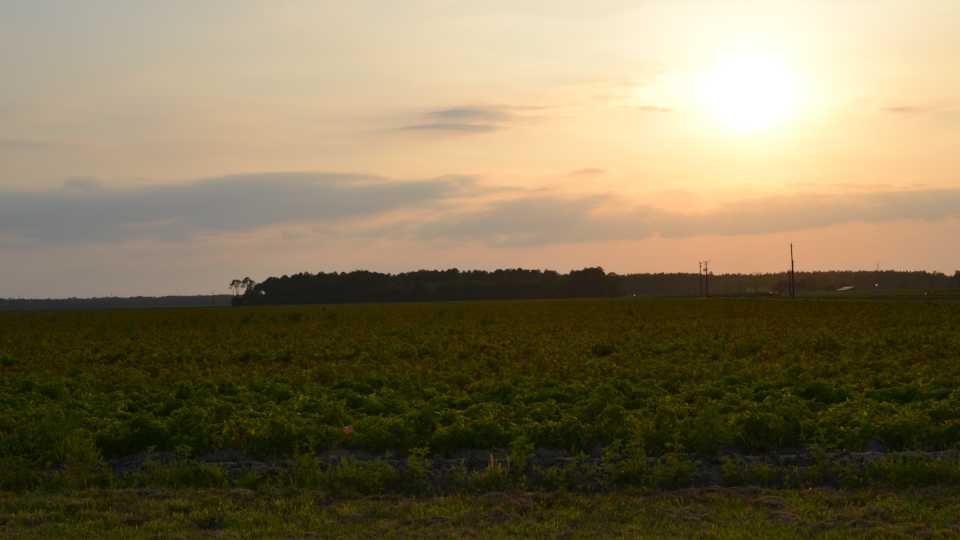
Not a bad view as folks enjoyed supper with all the fixin's sponsored by Ameris Bank. The sunset was a fine way to end another successful UF/IFAS Potato Field Day.
Photo by Paul Rusnak
View all
Meeting Mashup
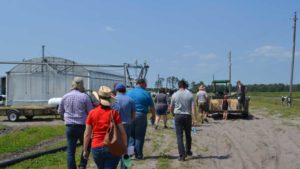
Water Wise
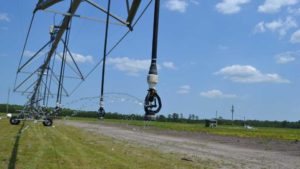
Fertigation Facts
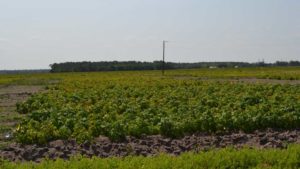
Let it Burn
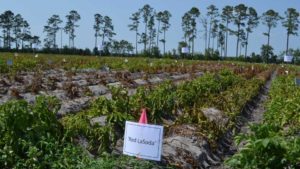
Specialty Spuds
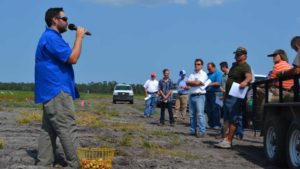
Hot Potatoes
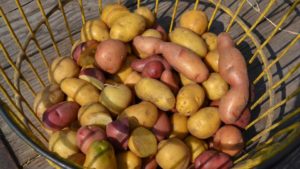
You Go, Joe
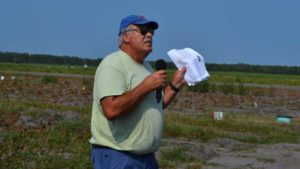
Mass Transit
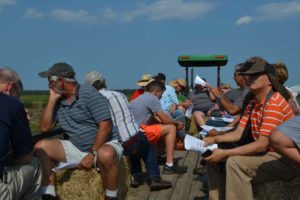
Nematology Know-How
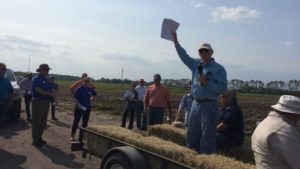
Instructive Interaction
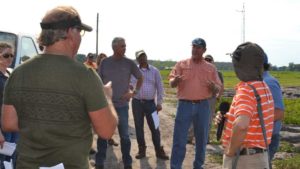
The Right Direction
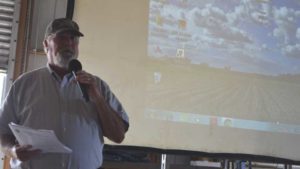
VIP in the House
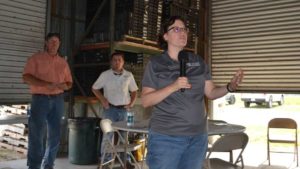
Heat Tolerant

Short Course in Session
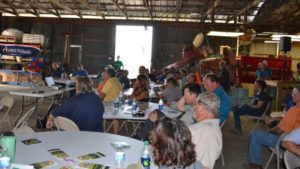
Something Sweet
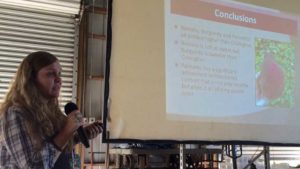
Dickeya Down-Low
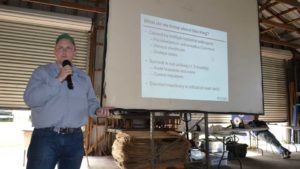
Until Next Time ...
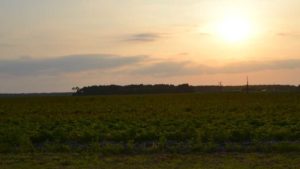
While times lately have yielded increasing challenges for potato producers, there are some emerging trendlines that could impact the industry’s landscape — for the better.
The recently held UF/IFAS Potato Field Day in Hastings was the perfect venue to vet some of the latest information regarding production, crop protection, as well as new marketing opportunities via specialty varieties.
Hosted by the UF/IFAS Hastings Agricultural Extension Center (HAEC) at its Cowpen Branch demonstration farm, the late afternoon gathering drew an impressive crowd despite it falling at the onset of harvest time.
Dark shades, plenty of sun block, and bottled water were necessary accessories as the event kicked off with a field tour to get a firsthand look at several trials in progress. Under the supervision of HAEC Director Gary K. England, stops along the way included presentations led by UF/IFAS researchers on fertigation factors for better yield, weed protection, nematode control, nutrient management, and more.
One stop of much interest focused on a partnership between UF/IFAS and USDA specifically for the specialty potato market. UF/IFAS Assistant Professor Lincoln Zotarelli and fellow researcher Christian Christensen tag-teamed to discuss the topic and show off field plots testing flesh specs, spacing, and heat tolerance of the ‘Papa Criolla’ variety. According to Christensen and Zotarelli, the overall goal of the partnership is to provide varieties with unique skin and flesh color combinations to growers to bolster their presence in a marketplace with growing demand for varieties with high nutritional/antioxidant value.
Similarly, sweet potatoes — a tuber that has reached “super food” status — has the potential to become a viable summer crop for producers in the TCAA.
Bonnie C. Wells, Doctor of Plant Medicine and St. Johns County UF/IFAS Commercial Agriculture Extension Agent, led off the short course portion of the program by presenting the promising potential of sweet potatoes. With its subtropical nature, preference for light, well-drained soils, and relatively low pest pressure, sweet potatoes appear quite suitable for the Sunshine State, Wells said. “The good thing about sweet potatoes for this area is they fit nicely into our traditional production system,” Wells said. “They like the heat and long summer days.”
In the quest to find what cultivars are appropriate for the area, Wells highlighted four: ‘Covington’ (the standard variety of the Southeast U.S.), ‘Boniato’ (white flesh resembling a traditional potato), ‘Burgundy’ (yellow flesh with red skin), and ‘Palmetto’ (high nutritional content and eye-catching purple flesh). “Food trends support the consumption of healthier, colorful, and more unique foods,” Wells said. “So, ‘Palmetto’ might have a greater market potential.”
As domestic consumption of sweet potatoes has increased steadily for nearly 20 years, so has supply. “U.S. production has risen substantially — about 6% per year [since 2000],” Wells noted.
That equates to an awful lot of acres and even more profit potential. This statistic alone should make sweet potato consideration a priority for more growers. With multiple questions coming from the audience at the conclusion of Wells’ presentation, it appears interest is growing.
Field trials on sweet potatoes are slated to continue throughout 2017. Stay tuned.
Overall, the mood of the meeting was upbeat. My main takeaway: Even in an industry as deeply rooted as potatoes are in Northeast Florida, change is inevitable. And that’s not necessarily a bad thing.
Check out the photo slideshow above to see highlights and find out what else was covered.
Subscribe Today For

Paul Rusnak is the Senior Online Editor for Meister Media Worldwide's Specialty Crops Division, which consists of American Vegetable Grower, American Fruit Grower, and Greenhouse Grower magazines, all Meister Media brands. He is based in Northeast Florida. See all author stories here.






